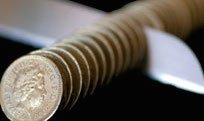Image analysis cuts osteoporosis costs
- 2 December 2010

Swedish medical researchers have found that analyzing historical digital images in radiology databases can save millions of euros by better predicting the onset of osteoporosis in patients who have previously had fractures.
Researchers at Sweden’s Karolinska Institute have identified a way of easing the burden of future osteoporotic fractures by analyzing historical radiology images.
They presented their findings at the 2010 congress of the Radiological Society of North America (RSNA) this week suggesting millions of euros can be saved through a structured osteoporosis prevention program.
A study of 8,257 patients at the Karolinska Institute in Stockholm, Sweden used Sectra’s patented Digital X-ray Radiogrammetry (DXR) method to identify patients that subsequently suffered from a hip fracture.
Osteoporosis is an under-diagnosed and under-treated disease. According to a report from the Swedish Association of Local Authorities and Regions on the quality of care in Sweden, only 14% of patients with a fracture are later treated for osteoporosis, while 60-70% are targeted for treatment.
Despite first fracture being a strong indicator of future osteoporotic fractures, only 10-20% of these patients are prescribed treatment. Convenient tools and systematic ways of working are key to the detection of the disease.
According to Sectra the new study shows that hospitals, regions or even countries can easily single out the patients in need of treatment without adding more than Sectra’s service, dxr-online, to images acquired in clinical practice.
With the majority of all radiology images now digital they argue that there is huge potential to reduce the future cost of osteoporosis-related fractures using radiology databases.
The study showed that BMD (Bone Mineral Density) is lower in patients who suffer from a hip fracture in subsequent years. Images taken in clinical practice of patients with low-energy fractures formed the basis of the study. For further details, refer to the scientific abstract.
DXR (Digital X-ray Radiogrammetry) is an automated method for estimating the distal forearm cortical bone mineral density from a standard X-ray.
The majority of clinics in the western world currently use digital modalities for X-ray and all that is needed to use Sectra’s dxr-online service is a digital X-ray modality and an Internet connection.
A hand x-ray image is captured at the clinic and sent to the Sectra online lab for analysis. The method has FDA approval for use as a medical device.
Link




